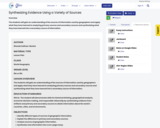
Conditional Remix & Share Permitted
CC BY-NC
English Instructional Plan – Analyzing Media Messages Grades 4-5
- Subject:
- Communication and Multimodal Literacy
- English
- Material Type:
- Lesson Plan
- Author:
- VDOE Project Team
- Date Added:
- 04/12/2022


